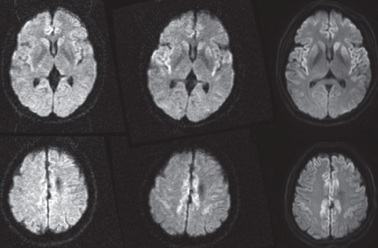
The Korea Centers for Disease Control and Prevention confirmed the country’s second case of iatrogenic Creutzfeldt-Jakob disease Thursday.
The first was reported Nov. 29, after the patient had died.
Authorities said that the disease is not ordinarily transmittable through and assured that the public was generally safe from contraction.
According to the KCDC, the patient is a 48-year-old man diagnosed with iCJD on Wednesday. He is believed to have contracted the disease after he received a dura mater graft transplant to treat an intracranial hemorrhage in 1988. The tissue graft is suspected of having been contaminated.
The product transplanted into his body was Lyodura made in Germany from tissue extracted from cadavers. It is the same brand that was used with the first patient who died in Korea.
ICJD infection due to a Lyodura transplant was first reported in the U.S. in 1987, followed by similar cases in New Zealand and other countries. In 1997, the World Health Organization advised its members to refrain from using dura mater extracted from cadavers.
From April 1987, the manufacturer has conducted an inactivation process targeting prions known to cause CJD, to remove the possibility of the disease’s prevalence. Still, it is possible that the product was imported before or shortly after inactivation because no international recall order has been imposed, said Park Hye-kyung, a KCDC official.
“Currently, there is no relevant record left regarding the import, stock management and the use of Lyodura at that time. Instead we will track all patients who have received the transplant surgeries. We will also study the cases of people who have been reported with suspected cases of iCJD,” Park said.
There have been about 210 reported cases of iCJD worldwide.
However, she admitted that was not much the government can realisticially do, since the incubation period of the disease is up to 30 years, and after clinical onset, one lives an average of one year.
“Many of them are assumed to be dead,” Park said.
By Bae Ji-sook
(baejisook@heraldcorp.com)
<한글기사>
韓 두번째 의인성 CJD추정 환자확인
수술 등을 통해 크로이츠펠트야콥병(CJD)에 감 염된 것으로 추정되는 의인성(醫因性) CJD 환자가 또다시 발견됐다.
국내에선 지난 7월 감각장애와 정신이상, 운동장애 등의 증상을 보이다 숨진 54 세 여성 이후 두 번째 사례다.
질병관리본부는 지난 7월 서울 소재 병원으로부터 산발성CJD(sCJD)로 진단받고 법정감염병신고체계를 통해 신고된 48세 남성의 병력을 조사한 결과, 뇌경막 이식 후 발생한 의인성CJD(iCJD) 사례로 확인됐다고 8일 밝혔다.
조사에 따르면 이 환자는 1988년 5월 외상에 따른 뇌실질 출혈로 수술을 받았고, 당시 뇌경막 이식(dura-graft)과 뇌경막 대용제인 '라이오듀라(Lyodura)에 관한 의무기록도 남아 있었다.
그러나 환자에게 이식된 뇌경막이 어떤 경로를 통해 수입되고 유통됐는지 등의 이력은 확인할 수 없었다.
이에 따라 질병관리본부는 신경과학회, 대한의사협회, 대한병원협회 등에 산발성CJD로 의심되는 환자들의 과거 수술력 등 의인성 CJD 관련 병력을 자세히 기록해 줄 것을 요청했다.
아울러 2000년 이후 법정감염병신고체계로 신고된 CJD 환자를 포함, 각급 병원 의 의무기록을 통해 확인 가능한 CJD 환자들을 대상으로 수술력 등 의인성 CJD 위험 요인 노출 여부를 확인하는 추적조사를 진행할 예정이다.


![[Exclusive] Korean military set to ban iPhones over 'security' concerns](http://res.heraldm.com/phpwas/restmb_idxmake.php?idx=644&simg=/content/image/2024/04/23/20240423050599_0.jpg&u=20240423183955)




![[Pressure points] Leggings in public: Fashion statement or social faux pas?](http://res.heraldm.com/phpwas/restmb_idxmake.php?idx=644&simg=/content/image/2024/04/23/20240423050669_0.jpg&u=)

![[Herald Interview] 'Amid aging population, Korea to invite more young professionals from overseas'](http://res.heraldm.com/phpwas/restmb_idxmake.php?idx=644&simg=/content/image/2024/04/24/20240424050844_0.jpg&u=20240424200058)








